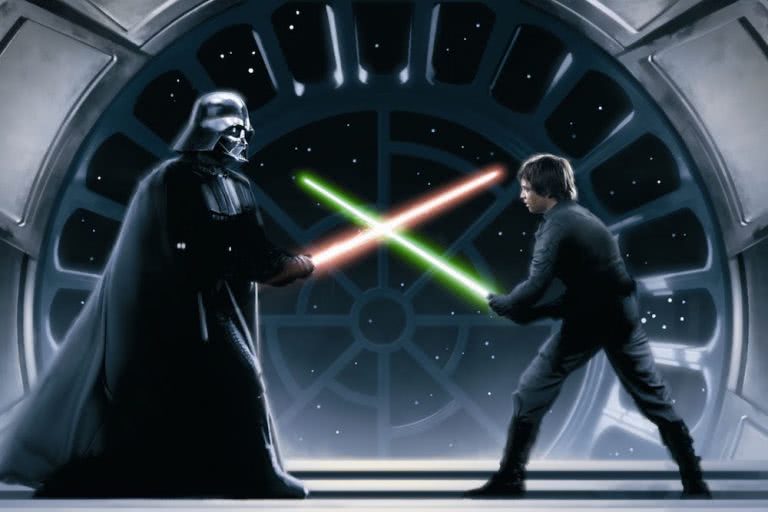1977 was a dark year. The optimism of the ‘60s had well and truly faded away – revolutionary movements in the United States felt largely like a thing of the past, and the general public found themselves stricken by a great political ennui.
Even the President himself, Jimmy Carter, proved strikingly average, both as a politician as a man. JFK had been dead for some 14 years, and it seemed like the dream of an engaged and informed electorate gone with him.
Every day the newspaper brought more bad news. Televisions feverishly covered the exploits of David Berkowitz, AKA Son of Sam, an infamous spree killer who made Yonkers, New York his hunting ground. Elvis Presley, the one-time king of rock and roll, died on his toilet, obese and burnt out.
The government shut down, restarted, then shut down again. An American man, Roy Sullivan, got hit by lightning for the seventh time in his life, in the process breaking a world record one would imagine he might have preferred had gone unbroken. Perhaps the American public knew how he felt.
“In many ways, Star Wars is curiously out of step with its times.”
American filmmakers responded to the malaise of their times in different ways. Wes Craven, the visionary who would later go on to make A Nightmare On Elm Street, dropped The Hills Have Eyes, a howl against post-‘Nam suffocation and middle-class boredom.
David Lynch finally released his debut feature Eraserhead, a lopsided horror set in a run-down, dreamlike but distinctly American city. And a young filmmaker named George Lucas unleashed a little sci-fi picture starring a cast of relative newcomers called Star Wars.
In many ways, Star Wars is curiously out of step with its times. It’s a fairy tale made for an audience who had largely turned their backs on such stories, happy to gorge themselves instead on the brutal, cathartic entertainment provided by television, both narrative and non-fiction.

It is a far cry from the other artistic successes of the year – it operates in a different universe entirely from John Boorman’s The Exorcist II: Heretic, for example, a film that soured the moral story of the original, and traded it for darkness, and for despair.
But more than anything, what made Star Wars a different beast is its unrelentingly, odd hopefulness. Luke Skywalker is a hero in the classic mode, torn straight out of the pages of Joseph Campbell’s Hero With A Thousand Faces. His journey is stock standard: he’s an orphan, like so many protagonists before him, raised without knowledge of the great, latent power inside him, unshackled from the bonds of normalcy by an older mentor who arrives in his life and tells him that he’s different.
“Star Wars clicked with the moviegoing public because of its simplicity, not despite it.”
Nor is the arc of his enemy, Darth Vader, particularly unique either. In that first film, Vader is a mythic figure of pure evil: a Golem of legend, animated by nothing but the urge to destroy, and to kill. He is a far cry from the real villains of the time – a thousand light years away from say, Berkowitz, a conflicted, mentally unwell man who, when he was caught in August of that year, proved disturbingly ordinary.
And yet Star Wars clicked with the moviegoing public because of its simplicity, not despite it. Like an ancient morality play, it reminded its audience of a valuable lesson they had all let themselves forget: that good things are possible. That kindness is real. That forgiveness has a power all of its own.
The moral arc of Star Wars bends forever towards justice. The first act of A New Hope might be filled with the galaxy’s filthiest denizens – pockmarked by “hives of scum and villainy”, bursting with fascist Stormtroopers and cloaked villains willing to wipe out entire planets – but, like Dante’s Divine Comedy, it is a film that moves forever upwards, emerging eventually to drink in a view of the stars, and the light. The film’s heroes – Luke, Han Solo, Leia – have their faith rewarded, and then some. They get by not on might, or savagery, but on simple, unfettered optimism.

This is the guiding principle of Star Wars to this day. It is the reason that the franchise has returned to us, twice now, during dark times. And it is the underlying machine powering Rian Johnson’s The Force Awakens, a film that goes some distance to truly define goodness – to understand it as more than the equal and opposite reaction to darkness. To define it as something complicated, and ever-evolving, and truly desirable.
It also explains why the film has become a watch for families. Star Wars has become something communal; something to be shared. It has become a rite of passage for parents to show to their children – a way of explaining the world to young ones, and guiding them towards a place of moral righteousness.
“At its heart, the message of Star Wars is as simple as it can be: true goodness is possible.”
When the first trailer for Rogue One dropped, the hive of scum and villainy that is the internet comment section derided the film for being overtly political, drawing lines between the film’s horde of space Nazis, and, y’know, the actual Nazis that are amassing themselves in sad piles around the globe. They howled that Star Wars had suddenly gone political. And in the process, they misunderstood the entire franchise; the force that has driven the films from the beginning.
At its heart, the message of Star Wars is as simple as it can be: true goodness is possible. Such a message only feels political now because goodness is somehow in dispute. But it shouldn’t be. And Star Wars is here, as ever, faithfully, to remind us why.
For another example of morals and character-building in our favourite film series, the all-ages Star Wars: Identities exhibition is heading to Sydney this November for its first ever Australian appearance, and showing off the sheer scale of these films by bringing with it hundreds of rarities from the Lucasfilm archives, including props, costumes, models and artworks that have appeared in the films.
Better yet, it also lets you and your kids build your own unique Star Wars characters as you move through the exhibition, decide whether you’d take to the light or dark side, and even meet them at the end.
Star Wars Identities: The Exhibition runs from Friday November 16 to Monday June 10 at the Powerhouse Museum, Sydney – head here to secure your tickets to a once-in-a-lifetime Star Wars experience for all ages.


































